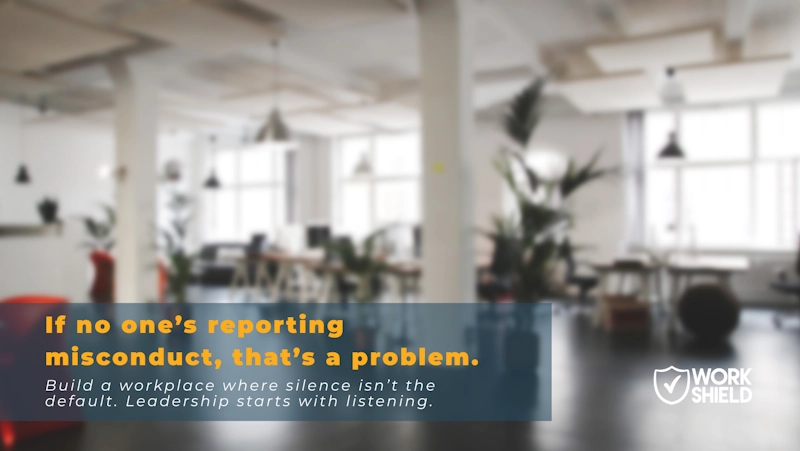My wife, Jennifer, and I started our company, Work Shield, about two years ago. You better believe we have worked our tails off – willingly and happily putting office furniture together at 3:00am, making midnight runs to the 24-hour Kinkos, wearing countless hats and even managing “the books” (we are both attorneys by trade – thankfully we have a CFO to do that, now!). We put in lots of blood, sweat and tears so that Work Shield could be a great company – for our clients and business partners, and also for our own employees.
We all know that building the foundation for a positive and open workplace culture isn’t as easy as flipping a switch. It takes time, intentionality, trial and error and so much more. And while working from home hasn’t completely derailed our efforts at building our culture, it has definitely taken them in a new direction. In the wake of the COVID-19 pandemic, there is one thing I can say with certainty — no matter how great your culture was before, it’s not going to be the same after.
A few concerns for our future workplace cultures.
- According to a new International Labour Organization report, COVID-19 has left more than four out of five people – 81% of the global workforce – affected by full or partial workplace closures. When we go back to work, the majority of businesses will have fewer employees. Pre-pandemic friendships/relationships with co-workers won’t be the same. Our culture “heroes” and encouraging and energizing employee personalities may no longer be with the company. Typical workplace social interactions will not be the same.
- With fewer people to do the work, employees may be asked to take on more responsibilities they don’t have time for, and in many cases, won’t be getting higher pay for doing.
- Amidst growing economic uncertainty, employees are going to be skeptical and unsure of their own job security. Previously-held trust in employers will need to be re-earned.
- Employees may expect more flexible workplace scenarios knowing it’s possible to be productive and accomplish work remotely. It won’t be as easy to rebuild cultures if our employees aren’t as physically present.
Five things to do now to start rebuilding and reshaping post-pandemic workplace cultures.
Evaluate Culture
Now’s a good time to take a good, hard look at what your workplace culture looked like before the COVID-19 pandemic. Returning to a different physical workplace will be a good time to implement (some) needed changes.
What would you want to change? What was working the best? Will that still work? While it’s fresh in their minds, engage employees in a culture survey and see what they think! If your company doesn’t already have a system in place to do so, you can always create your own with SurveyMonkey or a similar-type service.
Give Employees A Real Voice
When employees have the freedom and ability to express their feelings and concerns, they feel respected and valued. Implementing systems now to encourage that freedom will build much-needed loyalty and trust for the future. For instance, even if you have an “open-door” policy or a reporting hotline in place, if your company is still investigating harassment or discrimination incidents internally, your employees more than likely aren’t comfortable reporting incidents at all.
Instead, use an un-biased third party that your employees will trust for the reporting, investigating and resolving of incidents (like Work Shield). This shows employees you want them to speak up if something happens to them, you want bad behavior to stop, you care about their well-being and safety and are committed to providing an open workplace culture where all voices are heard.
Be Authentic
There’s enough uncertainty going around. Communicating with employees, transparency and truthfulness now will pay dividends in the future if employee expectations are well-managed. Food for thought – according to a study by Kelton Global for Slack, 55% of business owners described their organization as “very transparent,” but only 18% of their employees would agree.
Be Engaging and Responsive
We are all aware of the challenges concerning employee engagement while WFH. For our purposes here, the more engaged and less isolated your employees are now, the easier and more successfully they will transition back to a physical workplace. Recreate the water-cooler! As Harvard Business Review says —
One of the most essential steps a manager can take is to structure ways for employees to interact socially (that is, have informal conversations about non-work topics) while working remotely. This is true for all remote workers, but particularly so for workers who have been abruptly transitioned out of the office.
Show Empathy
Showing (and encouraging) empathy now will build loyalty and trust for the future.This juggling act is not easy for working parents. And while I’m not discounting the supreme efforts of working fathers, “sheltering-in-place” is especially hard for some working mothers. While certainly not always the case, many women are bearing the brunt of housework, schooling their children, making meals and still expected to keep up with their day-job. To make matters worse, they oftentimes aren’t receiving equal pay to their male counterparts.
We don’t yet know the full long-term impact of the COVID-19 pandemic. We aren’t the same companies now as we were before the outbreak, and we won’t be the same after. But how we treat employees now and how we plan for our companies’ future selves will help get us where we need to be faster.
About Jared Pope
Jared is Founder and CEO of Work Shield, the only start-to-finish workplace harassment and discrimination reporting, investigation and resolution solution that protects employees, employers and cultures at the same time. Jared practiced law and ran a practice focused on human resources, ERISA, benefits and employment matters for over 15 years and is a knowledgeable resource on workplace culture and harassment and discrimination issues.





